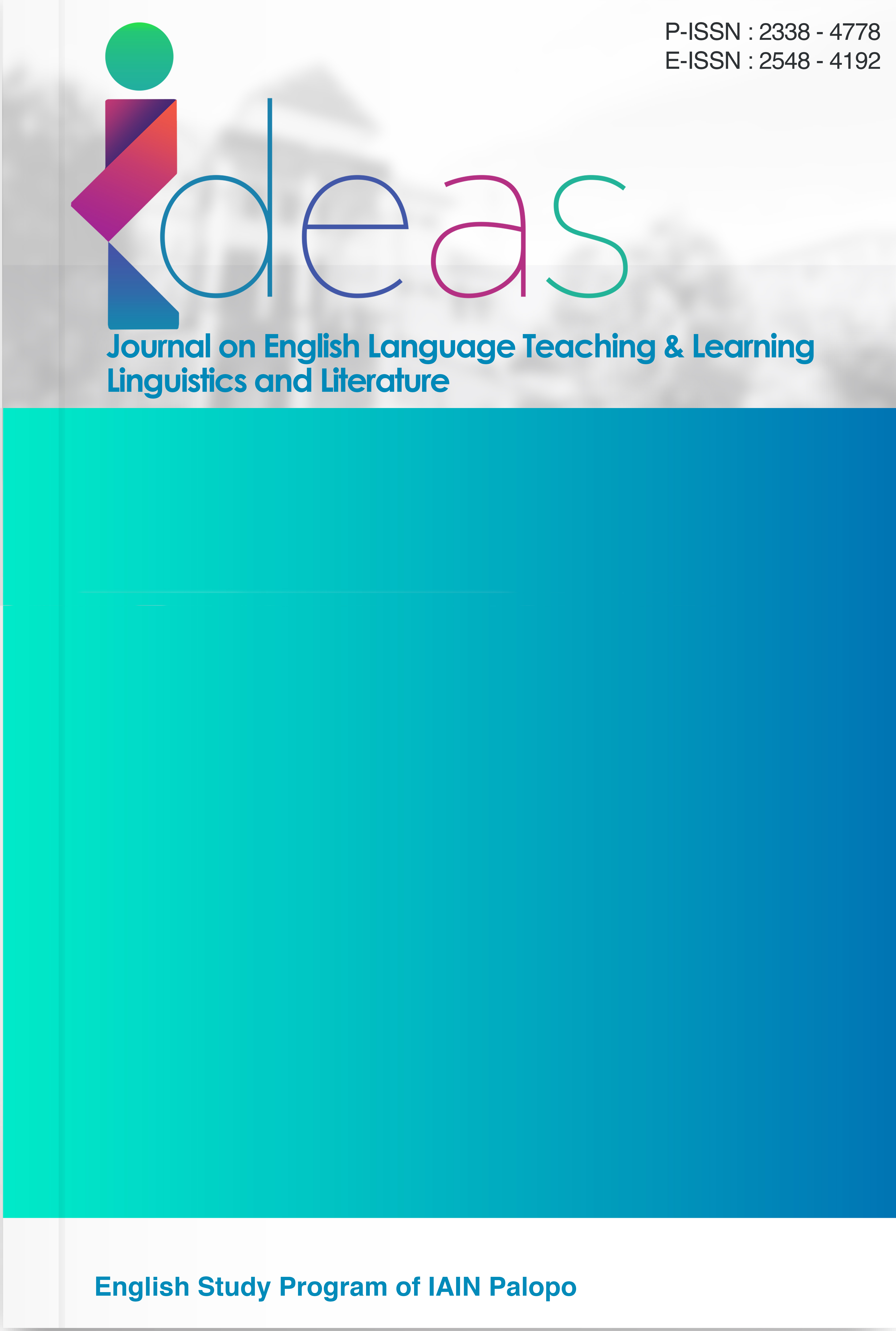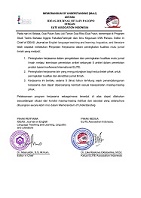Politeness Strategies in a Princess Tale: A Pragmatic Analysis of Barbie and the Diamond Castle
DOI:
https://doi.org/10.24256/ideas.v13i2.7451Keywords:
Politeness Strategies, Animated Film, Barbie and the Diamond CastleAbstract
This study investigates the politeness strategies employed by characters in the animated film Barbie and the Diamond Castle, aiming to explore how these strategies function to maintain social harmony and manage interpersonal relationships. The research is grounded in Brown and Levinson’s (1987) politeness theory, which categorizes politeness strategies into four types: bald on-record, positive politeness, negative politeness, and off-record. A total of 30 utterances containing politeness strategies were carefully extracted from the film’s dialogues through repeated viewings and transcription. Using a qualitative descriptive approach, the analysis revealed that positive politeness was the most frequently employed strategy, occurring 12 times (40,00%), followed by bald on-record strategies with 10 occurrences (33,33%). Negative politeness and off-record strategies were observed less frequently, with 4 (13.33%) and 4 (13.33%) occurrences, respectively. These findings suggest that the characters predominantly use positive politeness to convey friendliness and foster solidarity, while bald on-record strategies mainly serve direct and urgent communicative functions. Despite their lower frequency, negative politeness and off-record strategies play crucial roles in mitigating face-threatening acts and enriching subtlety in interpersonal interaction. This study addresses a significant gap in pragmatic research concerning politeness in children’s animated media, which remains underexplored compared to adult-oriented content. The results offer valuable implications for educators, linguists, and media producers aiming to enhance socially appropriate communication in children’s programming.
References
linguistic study on Maccera’Bulung ritual. Opción: Revista de Ciencias Humanas y Sociales, (27), 94.
Arafah, B., Sirajuddin, J., Thayyib, M., Room, F., Takwa, T., & Anayati, W. (2023). Emotional Management of Defoe's Robinson Crusoe's Main Character. Journal of Language Teaching and Research, 14(5), 1414-1421.
Barbie and the Diamond Castle (2008) Directed by Gino Nichele. Mattel Entertainment. Rainmaker Entertainment. Accessed via Youtube.
Brown, P., & Levinson, S. C. (1987). Politeness: Some universals in language usage. Cambridge University Press.
Fridolini, Arisena, D. A., & Idawati, K. (2021). Politeness strategies analysis reflected in Little Women movie by Greta Gerwig. Jurnal GEEJ, 8(2).
Dewi, P., & Sari, D. (2022). Perception of Digital Storytelling in Overcoming Fear for Speaking English through Interdisciplinary Project of Gender Issues. IDEAS: Journal on English Language Teaching and Learning, Linguistics and Literature, 10(2), 1635 – 1642. doi:https://doi.org/10.24256/ideas.v10i2.2748
Ekasiwi, A., & Bram, B. (2022). Exploring Euphemisms in Bridgerton: Diamond of the First Water. IDEAS: Journal on English Language Teaching and Learning, Linguistics and Literature, 10(1), 240-248. doi:https://doi.org/10.24256/ideas.v10i1.2599
Hendar, & Anshari, M. M. S. (2021). Pragmatics analysis on refusal and politeness strategies in Home Alone movie by John Hughes. English Journal Literacy UTama, 5(2).
Hakim, M. L., & Novitasari, N. F. (2022). Politeness strategies used by the main character in the film Onward. Celtic: A Journal of Culture, English Language Teaching, Literature and Linguistics, 9(2), 191–204. Doi: 10.22219/celtic.v9i2.23436.
Musyafa’ah, L., Yuliasri, I., & Pratama, H. (2022). Politeness Strategies of the Main
Characters of Pride and Prejudice Movie. English Education Journal, 12(3),
310–418. https://doi.org/10.15294/eej.v12i3.58194
Masruddin, M., Amir, F., Langaji, A., & Rusdiansyah, R. (2023). Conceptualizing linguistic politeness in light of age. International Journal of Society, Culture & Language, 11(3), 41-55.
Nurilaila, E., Ricahyono, S., Setyadi, D., & Arifin, S. (2020). National cultures and politeness strategies in intercultural communication among Japanese and American characters in The Last Samurai movie: A cross-cultural pragmatic analysis. Social Sciences, Humanities and Education Journal (SHE Journal), 1(1), 10–17.
Rosari, M. (2016). Politeness strategies applied by the characters of The Great Debaters movie. LLT Journal: A Journal on Language and Language Teaching, 19(1).
Sidabutar, K. (2022). Grice's Types of Maxims in "Willoughbhys" Movie. IDEAS: Journal on English Language Teaching and Learning, Linguistics and Literature, 10(1), 326-337. doi:https://doi.org/10.24256/ideas.v10i1.2661
Violita, V., & Cholsy, H. (2022). Speech Acts Equivalence of Audiovisual Translation on Enola Holmes Netflix Movie Subtitle. IDEAS: Journal on English Language Teaching and Learning, Linguistics and Literature, 10(1), 209-225. doi:https://doi.org/10.24256/ideas.v10i1.2589
Downloads
Published
Issue
Section
Citation Check
License
Copyright (c) 2025 Pande Komang Dewi Utari, Putu Gede Budiartha

This work is licensed under a Creative Commons Attribution-ShareAlike 4.0 International License.
Authors retain copyright and grant the journal right of first publication with the work simultaneously licensed under an Attribution-ShareAlike 4.0 International (CC BY-SA 4.0) that allows others to share the work with an acknowledgement of the work's authorship and initial publication in this journal.
Authors are able to enter into separate, additional contractual arrangements for the non-exclusive distribution of the journal's published version of the work (e.g., post it to an institutional repository or publish it in a book), with an acknowledgement of its initial publication in this journal.
Authors are permitted and encouraged to post their work online (e.g., in institutional repositories or on their website) prior to and during the submission process, as it can lead to productive exchanges, as well as earlier and greater citation of published work (See the Effect of Open Access)




